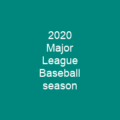Major League Baseball: The Grand Stage of America’s Pastime
Imagine a grand stage where the greatest athletes in baseball history have performed their artistry. That’s Major League Baseball (MLB), the premier professional baseball league that has captivated millions for over 150 years. From the hallowed grounds of Wrigley Field to the bright lights of Yankee Stadium, each ballpark is a testament to the enduring spirit of America’s favorite pastime. Let’s dive into the rich tapestry of MLB’s history and its evolution in the modern era.
The Birth and Growth of MLB
MLB was born out of necessity and ambition. In 1876, the National League (NL) was formed to bring order to a chaotic landscape of amateur and semi-professional teams. A mere five years later, in 1901, the American League (AL) emerged as a rival league, setting the stage for what would become one of the most competitive sports leagues in the world.
These two leagues have since merged into a single organization under the leadership of the commissioner of baseball. The National Agreement of 1903 cemented their cooperation and established a formal classification system for minor leagues, ensuring that players could progress from lower-tier teams to the major leagues.
The Golden Age and Beyond
From about 1900 to 1920, baseball entered its ‘dead-ball era,’ where home runs were rare. This period was marked by pitcher dominance and innovative strategies. The Black Sox Scandal in 1919 brought the sport to a crossroads but ultimately led to significant changes in governance.
Following the scandal, baseball’s popularity surged in the 1920s and 1930s. The introduction of new white baseballs helped end the ‘dead-ball’ era, and teams like the New York Yankees began their rise to prominence. Jackie Robinson broke the color barrier in 1947, marking a pivotal moment in American sports history.
Modern Challenges and Innovations
The modern MLB faces new challenges and innovations that have transformed the game. In recent years, advancements like Statcast have revolutionized how teams analyze player performance and make strategic decisions on the field. Defensive shifts have become more common, leading to rule changes aimed at maintaining a balance between offense and defense.
Technology and Rule Changes
The introduction of a pitch clock in 2021 has been designed to reduce game length by limiting the time between pitches. This move aims to address concerns about the pace of play, which has slowed due to an increase in strikeouts, walks, and pitching time.
Additionally, MLB has taken steps to combat performance-enhancing drugs with random, in-season testing for substances like HGH and testosterone. The 2023 season marks a significant shift in how teams approach the game, with each team playing at least one series against every other team annually.
The Future of MLB
As we look to the future, MLB continues to expand its reach globally through international exhibition games and partnerships. The league is also exploring potential expansion, with several investment groups vying for a new franchise. These moves reflect the ongoing evolution of baseball in an ever-changing world.
The Organizational Structure
At the heart of MLB’s operations lies its unique organizational structure. Governed by the Major League Baseball Constitution, the league is headed by the commissioner, who has significant power to make decisions unilaterally. The deputy commissioner and other executives oversee various aspects of the game, from marketing and labor contracts to television deals.
MLB Advanced Media oversees MLB.com and each team’s website, ensuring editorial independence while maintaining a shared ownership model. Similarly, MLB Productions focuses on video content and traditional broadcast media, with its own distinct editorial voice within the league.
The Evolution of Baseball Uniforms
Baseball uniforms have evolved significantly since their inception in 1849. The first team to use a uniform was the New York Knickerbockers, wearing blue wool pants, white flannel shirts, and straw hats. Over time, teams began using striped uniforms and different colors for home and away games.
Today, most teams have alternate uniforms featuring primary or secondary colors on the vest. These changes reflect not only fashion trends but also team branding and marketing strategies. The use of technology in uniform design has also become more prevalent, with advanced materials enhancing player performance and comfort.
The Playoffs and Beyond
Each year, twelve teams enter the postseason playoffs: six division champions and six wild-card teams. The postseason consists of four rounds, culminating in the World Series, a best-of-seven championship series between league pennant winners. This structure ensures that every team has a chance to compete for the ultimate prize.
The regular season ends in early October, with each team playing 162 games per season. The format for home fields in subsequent series varies, but usually splits home fields in a 2-3-2 format. The All-Star Game, held in July, features players from the American League and National League, showcasing the best talent in baseball.
Conclusion
Major League Baseball has come a long way since its inception over 150 years ago. From the early days of the dead-ball era to the modern era of advanced analytics and global expansion, MLB continues to evolve while maintaining its core values and traditions. As we move forward, one thing is certain: baseball will always hold a special place in American culture, captivating fans with its timeless charm and endless stories.

You want to know more about Major League Baseball?
This page is based on the article Major League Baseball published in Wikipedia (retrieved on March 5, 2025) and was automatically summarized using artificial intelligence.







